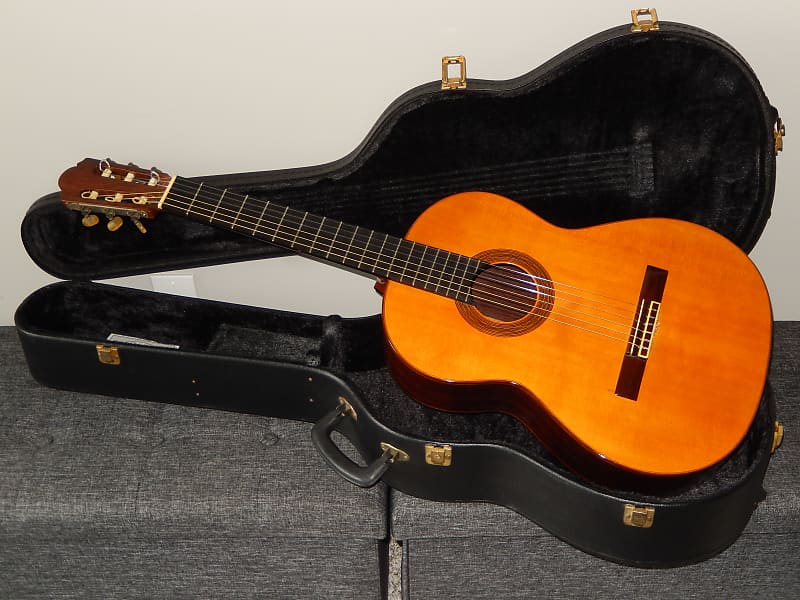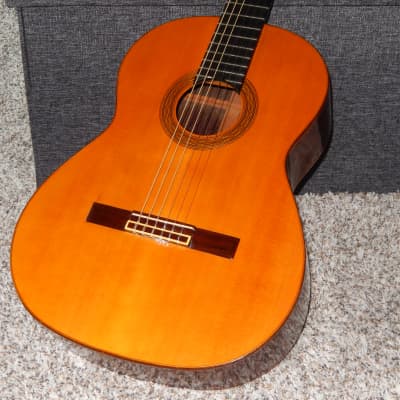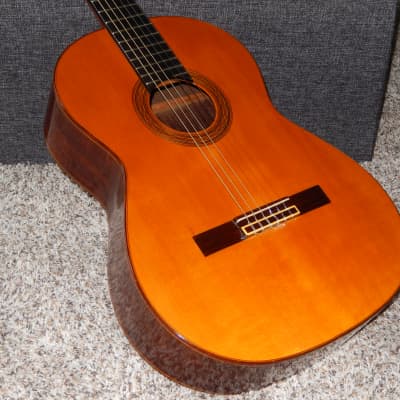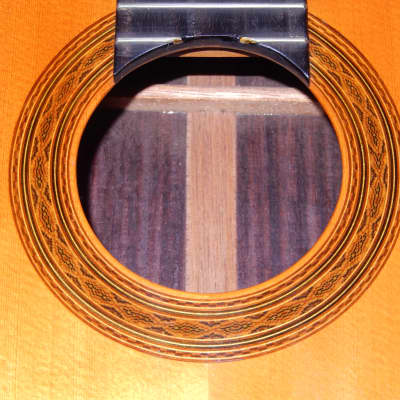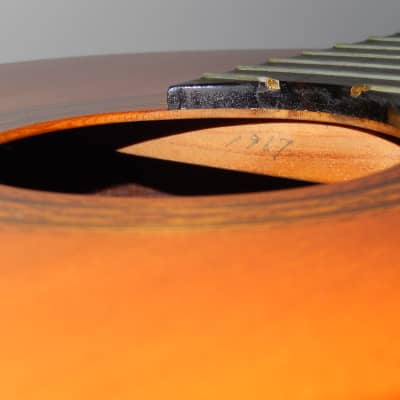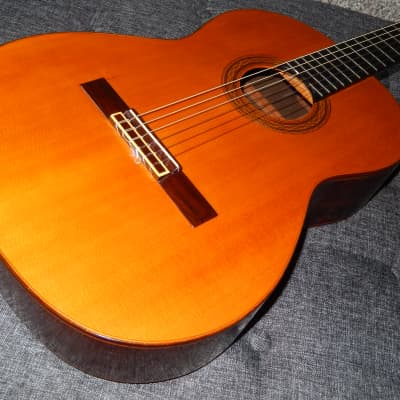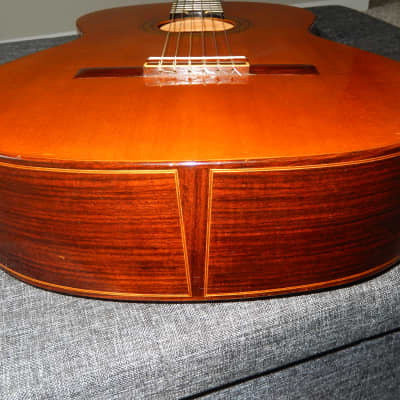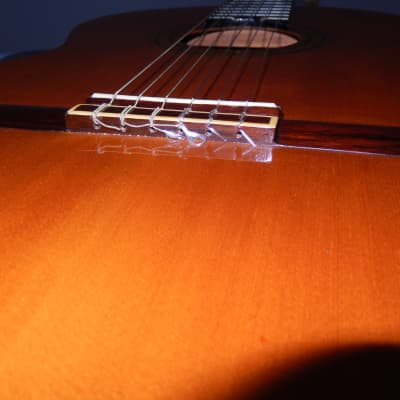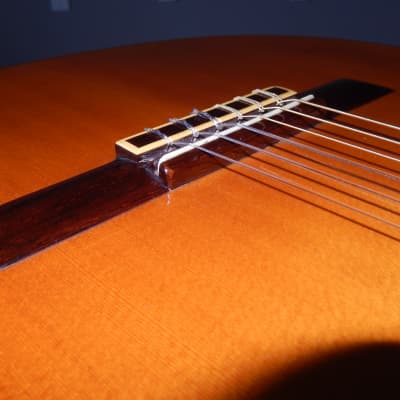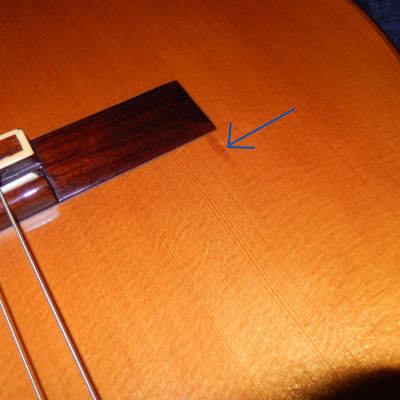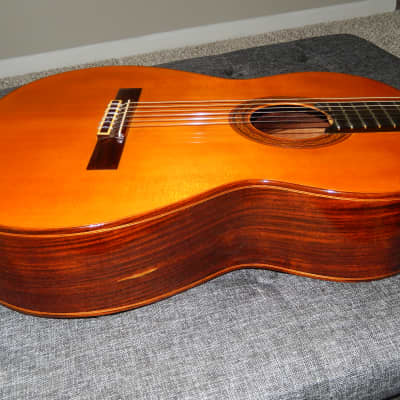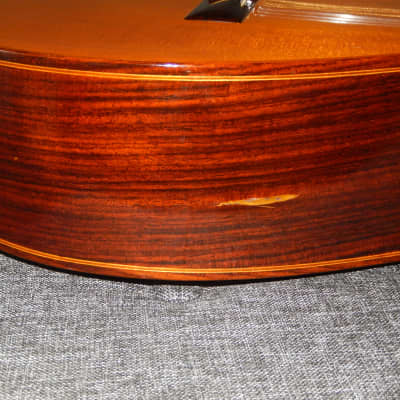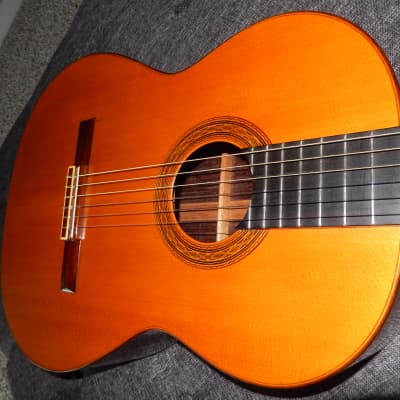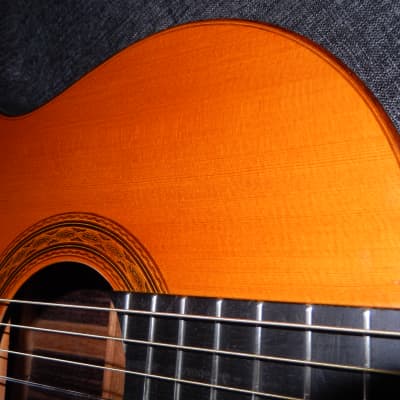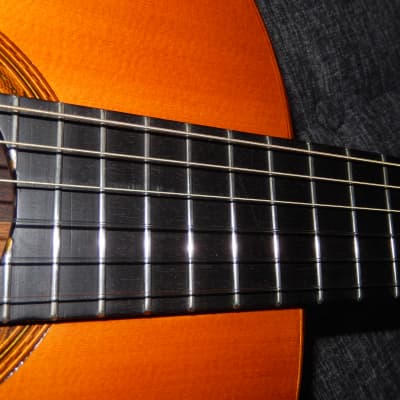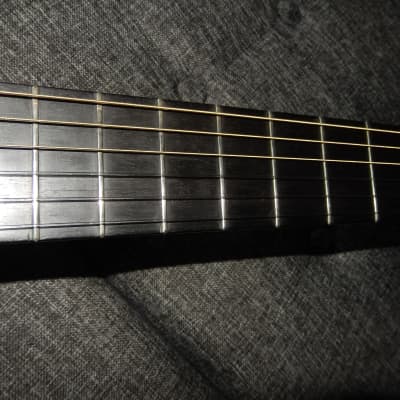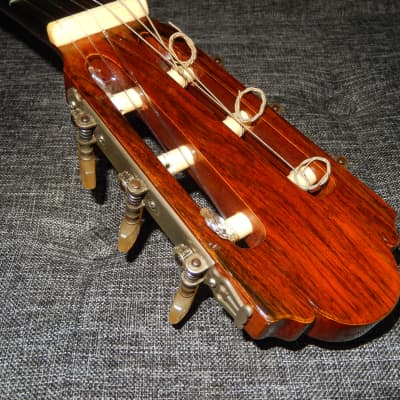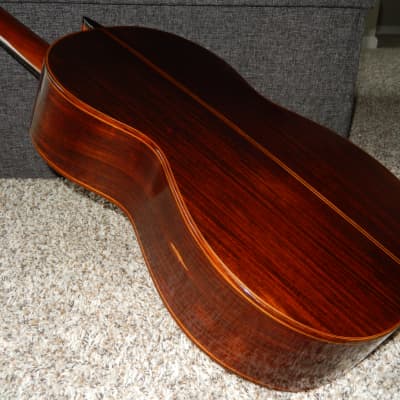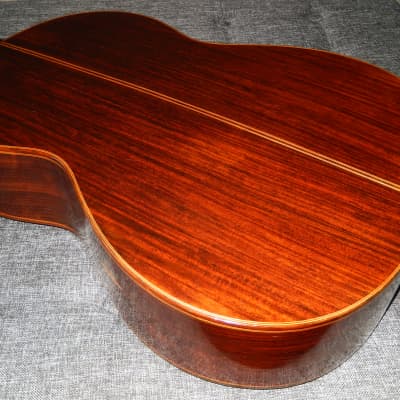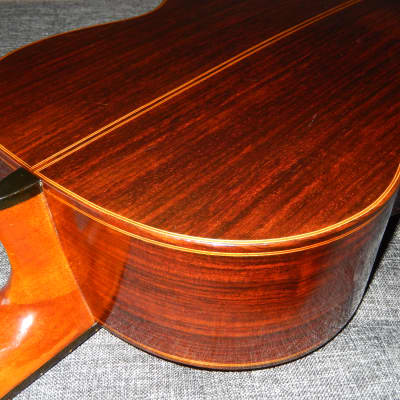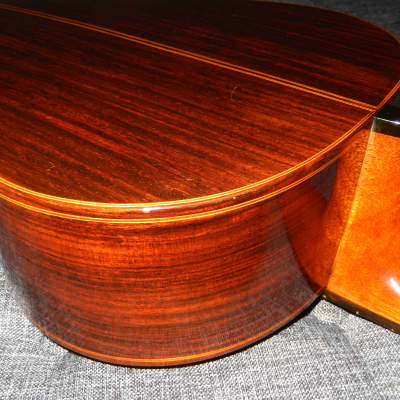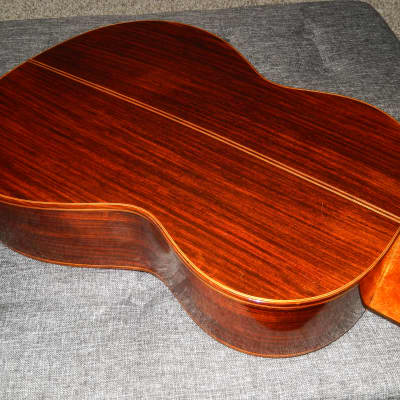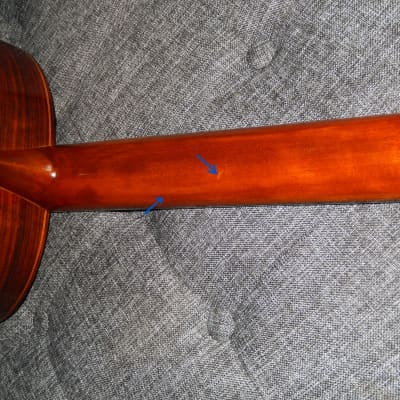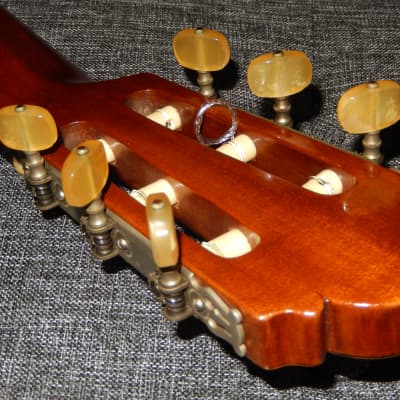Several hundred guitars I have sold in the past are presented at Facebook.com/Victors.Guitar.Library.
Masaru Kohno Custom 1967 635mm scale & 52mm nut
I started importing and selling Japanese made guitars in early 2013 and have sold over 1000 of them since. Several of these guitars were sold by Masaru Kohno, among them his highest models from mid 1970s, model No20 1975 and model 30 1976. While dealing with these guitars I couldn’t understand where Kohno’s fame was coming from. Models 10 from 1970, 1971 and 1974 sounded way below my expectations (to say the least), model 15 from 1977 sounded nice but still behind many guitars made by other makers sold in Japan at the same prices. Model 20 1975 was OK, but I couldn’t force myself to like it. The top of line in 1976 model 30 1976 was my greatest disappointment and discovery at the same time. I started to realize what was happening in the early/mid 1970s with the Kohno brand.
I must add that during the last 11 years I have seen several thousands of Kohno guitars. It was becoming obvious to me that a small workshop with few apprentices couldn’t possibly produce thousands of high-class guitars every year. I was already familiar with Juan Orozco’s statement in which he claimed that his MIJ guitars were made at the same Tama factory as Kohno guitars. Out of every batch of 500 units, 100 was being made for Orozco (with his design headstocks) and 400 for Kohno. I believe it 100%. And there is nothing wrong or unethical about such outsourcing if certain quality standards are met. Many other famous luthiers around the world were doing the same. Jose Ramirez III has made very few guitars all by himself, but he signed labels of 15 000 units of 1a model made by few dozens of other craftsmen. In late 1960s and early 1970s Casa Nunez of Argentina was selling 40 000 guitars annually. Yamaha corporation wasn’t far behind, but they had their own workshops (since 1969 Tenryu/Wada factory in Japan and since 1971 Kaohsiung factory in Taiwan). During those years it was very common in Japan that guitar makers with contracts for high number of instruments were simply hiring other workshops and there was many of such workshops around. Those workshops also had talented and experienced luthiers capable of making very high-class instruments. Yet these craftsmen were making exactly what they were paid for. With my 11 years of experience with these instruments, I know well that most guitars ordered by international importers and distributors were made “for less”, while made by the same craftsmen instruments sold in Japan were of much higher class. Another obvious to me truth is that the more famous name or brand name was on the label the higher was the price for the same quality instrument. On this market Masaru Kohno was “The King” and could price his brand guitars “freely”. I strongly believe that in the 1970s his models 10 and below, were all made outside of his workshop. Those higher models were made by his apprentices and even though they were all using the same blueprint, these instruments had their “individual touch”, and some sounded better than the others. Only the highest models had Kohno’s signature on their labels, yet I doubt they were all made by him personally and still don’t see anything unethical here. All Hiroshi Tamura and Ryoji Matsuoka models had their signature on their labels while they were made by their associates. Many individual Japanese luthiers never signed their labels because for them the label itself was their “certificate”. Many of these individual luthiers were running their small traditional shops all by themselves, making a limited number of very high-quality instruments. One of these luthiers was Saburo Nogami, who was hired by Masaru Kohno in 1958 as his first ever apprentice.
With all this knowledge and experience, about 8 years ago I lost my interest in trading Kohno guitars. But I was still thinking about the instrument that made him win the international competition in 1967 (during which Daniel Friedrich won second place). This must have been an incredible instrument that put an unknown man from Japan above (later very famous) European luthiers. I have found the answer while playing his guitars made prior to this competition or soon after. The guitar you are looking at is one of them.
The first guitar from that era in my hands was No4 from 1965. The second one was No4 from 1966. The third one model C2 from 1964. All these guitars sounded way above those guitars made in 1970s. All had very mystique and seducing tonality, with beautifully brilliant trebles and rich yet focused basses, wonderful sustain and very high level of note clarity and separation. They were all loud but gentle at the same time, with a high level of transparency. They all felt easy to play and playing them was very relaxing. To my ears they closely resembled the sound form recordings made with original Antonio de Torres guitars. None of these guitars were Kohno’s the top-of-the-line models, none made with Brazilian Rosewood b/s, yet far superior to his top-of-the-line model No30 from 1976. They were all a pure pleasure to play. So is the guitar you are looking at.
https://reverb.com/item/76515491-rarity-made-in-1964-masaru-kohno-c2-famously-great-classical-concert-guitar
https://reverb.com/item/43190429-made-in-1966-masaru-kohno-no4-truly-magnificent-classical-concert-guitar
When I saw this short scale guitar without the label, I immediately had a feeling that it was made by Kohno’s workshop. The (Fleta inspired) design of its headstock is practically identical with headstock design used by Masaru Kohno through the 1960s until late 1969 (when Kohno introduced his own unique design used until today). The rosette on this short scale guitar is the same in style as rosette designs used by Kohno in 1960s (he was using several different ones over the years until he finally introduced his own unique rosette design in 1970, used on his and Takamine guitars until today). The same tuning machines were used by Kohno on his top models. While the bridge decoration looks different, the saddle shape & thickness is the same as used by Kohno on his regular guitars from that era. To my eyes the year 1967 visible on its brace could have been written by the same hand that was writing dates on Kohno labels. You may take a closer look at the label of this guitar https://reverb.com/item/79602878-1967-masaru-kohno-sp-vintage-classical-guitar
Yet I have also noticed some differences. This short scale guitar was made more “elegant” and “extra smoothed” just as if it was made for someone very special, perhaps for a special lady. The wedge shaped insert the connects side plates at the bottom is a nice ornamental addition. As I have measured it all, its headstock has the same thickness and width, but is a little shorter than on Kohno’s regular scale guitars. Its head plate and bridge are made from Brazilian Rosewood, which was reserved only for Kohno’s top models. Its back and sides are made from sweet smelling Rosewood, but I don’t think it is a BR. The finish on its top feels sturdier than the finish on his other guitars and has an unusual orangish tint in it.
While I was working on this guitar bringing it back to its former glory, I still had some doubts about its maker. Yet when I finally put the new strings on it all my doubts were gone. Its sound closely resembles the sound of 3 guitars I had described above. Just to double check it all, I have installed the same strings on yet another Kohno guitar, model 303 from 1963. Both guitars sound practically identical, with the one from 1963 a little brighter and the short scale one little darker. https://reverb.com/item/80615256-super-rare-masaru-kohno-303-1963-world-highest-class-classical-concert-guitar
Therefore, with all this knowledge and experience, I dare to present this guitar as made by Masaru Kohno’s workshop.
**************************************************
Masaru Kohno was the most famous Japanese classical guitar maker and is still considered one the greatest among all world class luthiers that ever walked the Earth. His guitars have been and still are played by legendary classical guitar virtuosos.
If you are interested in classical guitars, it is highly unlikely that you have never heard of Masaru Kohno. If you’d like to deepen your knowledge about his deeds, there is plenty of info you can find on-line.
You may also find out that when contemporary luthier makes classical guitar from 40+ years old woods its price easily reaches $10000USD. Famous European luthiers may easily charge twice that much.
After you do all this research you shouldn’t be surprised by current prices of Kohno guitars. The older they are the more precious they are to collectors and players alike.
Any Kohno guitar made in the mid1960s is quite a rare find. In those years Masaru Kohno along with his associates (Saburo Nogami, Hiroshi Komori, Mass Hirade, Osamu Tomita) was making no more than few hundred guitars per year. Only after his 1967 win in international luthier competition in Belgium, Masaru Kohno’s workshop started to make far greater numbers of guitars, to reach several thousand units per year by mid1970s. One major reason for such output was Masaru Kohno’s fame. Perhaps more important was that labor market in Japan and currency exchange rates were very favorable to international buyers/importers. Yet towards the end of 1970s all these economical relationships were quickly changing and “hand made in Japan” instruments becoming more and more expensive to international players; hence demand was greatly declining. The end of 1970s was the end of Golden Era for most Japanese luthiers. Only those with strong international ties continued to prosper yet couldn’t expand their workshops at the same pace as was possible in the 1970s. Their workshops became smaller again and the number of high-end models greatly reduced while their prices steadily went up.
**************************************************
The sound this guitar produces matches the fame of its maker. It is very powerful, yet very lyrical, with strong piano-like trebles, cello like basses and very mystique tonality, and very extended sustain. This instrument can quickly take you away from all your earthly matters. Even with its (standard for classical guitars) action it plays very easy.
Even though it has a small crack on its side, a few small and light dents on its top, back, sides and the back of the neck, the overall condition of this guitar can be described as “excellent for its age”. Even though one can see a few short, hair wide and hair deep surface cracks on it, the overall condition of the fingerboard and frets can be described as excellent. The guitar’s original finishes remain sturdy and lustrous. Original tuning machines work fine. Despite its shorter scale its body is of regular size.
Specifications:
Top: Very Fine Solid Spruce/7 braces fan/cashew lacquer
Back & Sides: Solid Indian Rosewood/ cashew lacquer
Neck: Mahogany
Fingerboard: Ebony
Scale: 635 mm
Nut width: 52 mm
Strings: Aranjuez Concert Gold Set 700 Low Gauge
Action is set to 4.00 mm under E6 and 3.50 mm with no extra room on the saddle.
This guitar will be shipped in a used hard shell case.
Real Value of Japanese Vintage Guitars
The key to understand value of vintage Japanese guitars is to acknowledge galloping price inflation (devaluation of Japanese yen) during 1960s & 1970s. This inflation slowed down in the 1980s.
During 1960s and most of 1970s model numbers of Japanese guitars were strictly interconnected with their prices in Japanese yen. By the early 1980s and during following decades model numbers were no longer strictly associated with their prices. Some Japanese guitar makers introduced model names instead of model numbers. Others were still using model numbers with the addition of letters and/or other symbols.
It is then important to understand that two Yamaha GC10 guitars made 10 years apart are two instruments of totally different classes. The same applies to any other Japanese maker/brand.
The logical way to estimate the true class of any given Japanese made instrument is to compare its price with the average annual salary of wage workers in Japanese private sectors. This salary was: 450 600 yen in 1965 - 825 900 yen in 1970 - 1 868 300 yen in 1975 - 2 689 000 yen in 1980 - 3 163 000 yen in 1985 - 3 761 000 yen in 1990 - 4 107 000 yen in 1995 - 4 082 000 yen in 2000.
Any guitar priced 100 000 yen in 1970 (labelled as No10 or No100) would be priced 200 000 yen in 1975 (relabeled to No20, No200 or 2000), 300 000 yen in 1977 (labelled as No3, No30 or 3000) and 500 000 yen by 1985 (labelled as No50 or 5000).
Starting in 1977 Masaru Kohno introduced his new models No40 priced 400 000 yen and No50 priced 500 000 yen. By the early 1980s Kohno started using model names instead of numbers and was steadily raising their prices without changing model labeling. His very top model 50 became model “Special”, and a decade later it became model “Maestro”. Naturally, all other Japanese guitar makers were doing similar pricing (labelling) upgrades.
Knowing all of that, you can bet on that Masaru Kohno No50 made in 1982 is practically the same grade instrument as Kohno No20 made in 1972, or Kohno no 30 made in 1975.
In the early 1970s the lowest Ryoji Matsuoka (all plywood) model was 10, followed by (solid top) models 15, 20, 25, 30, 40, 50, 60, 80 and (all solid woods) models 100 and 150. Models 50, 60 and 80 were made with non-solid figured Brazilian Rosewood (double) back and sides and top model 150 was the only one made with solid figured Brazilian Rosewood b/s.
In 1980 the lowest Matsuoka model was (all plywood) 20, followed by (solid top) models 30,40,50, 60 and all solid woods models 80,100,150 and 200. By 1990 the lowest Matsuoka model was M40 and the highest was M300. By 2010 the lowest Matsuoka model was M50, and the top model was M270.
You can bet that Ryoji Matsuoka model 50 from 1980 is of the same grade as model M100 from 2000, model 100 from 1980 is of the same grade as model M150 from 2000, model 150 from 1980 is of the same grade as M200 from 2000 and model 200 from 1980 is of the same grade as model M300 from 2000.
It is important to mention that if modern era luthiers are using 40+ years old woods to make an “all solid” woods classical guitar, its price is minimum $8000.
All vintage guitars made with Brazilian Rosewood are especially precious, including those made straight grain varieties and those with non-solid b/s.
Because response and tonal properties of Spruce soundboards are improving over time, long seasoned Spruces are far more precious than long seasoned Cedars.
It is not very difficult to find out what are current prices of such guitars made by the world’s leading luthiers.
Important message for Australian buyers:
USPS International Priority Mail packages destined for Australia have quite restricted size (max. length is 42” and max. length + girth is 97”). For these reasons I must use the case that is no longer than 41” and therefore it may be different than the one you see on the pictures. You should ask me for any other details prior to making a purchase.
